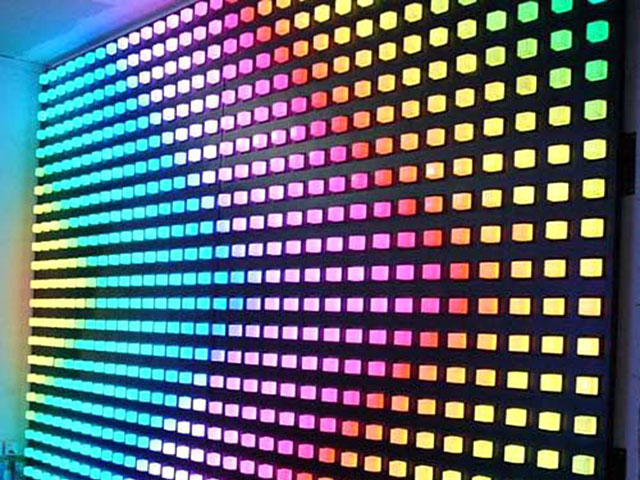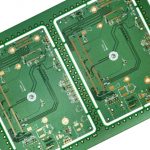LED screens are becoming more and more popular in various settings, from retail displays to concerts and events. But with so many different types of LED screens available, it can be challenging to determine which one is right for your specific needs. One essential factor to consider is pixel pitch, which refers to the distance between each LED pixel on the screen. In this post, we’ll take a closer look at two popular pixel pitches, P2 and P3, and compare their features, benefits, and drawbacks.
Understanding Pixel Pitch
Before we dive into P2 and P3 LED screens, it’s essential to understand what pixel pitch is and why it matters. Pixel pitch is the distance between each LED pixel on the screen, measured in millimeters. The smaller the pixel pitch, the closer together the pixels are, resulting in higher pixel density and better image quality. However, smaller pixel pitches also mean higher costs and reduced viewing distance.
To calculate pixel pitch, you need to know the size of the screen and the number of pixels. For example, a 1920×1080 resolution screen with a diagonal size of 100 inches would have a pixel pitch of approximately 0.58mm (assuming a 16:9 aspect ratio).
P2 LED Screens
P2 LED screens have a pixel pitch of 2mm, making them one of the smallest pixel pitches available. This means that P2 screens have high pixel density, resulting in excellent image quality even at close viewing distances. P2 screens are ideal for indoor applications where space is limited, and high-resolution graphics or video are required.
Pros
- High pixel density results in excellent image quality
- Ideal for indoor applications with limited space
- Ideal for displaying high-resolution graphics and video
- Can be used for curved or irregularly shaped displays
- Brightness and contrast ratios are often higher than P3 screens
Disadvantages
- Higher cost compared to P3 screens
- Reduced viewing distance due to small pixel pitch
- Not suitable for outdoor use due to low brightness
Ideal Applications for P2 LED Screens
- Trade shows and exhibitions
- Indoor advertising displays
- Corporate lobbies and boardrooms
- Digital signage in retail settings
P3 LED Screens
P3 LED screens have a pixel pitch of 3mm, making them larger than P2 screens but still relatively small compared to other pixel pitches. P3 screens offer high image quality at a lower cost than P2 screens, making them a popular choice for indoor and outdoor applications.
Advantages
- Good balance between image quality and cost
- Ideal for indoor and outdoor applications
- Can be used for curved or irregularly shaped displays
- Brightness levels are suitable for most lighting conditions
Disadvantages
- Lower pixel density than P2 screens
- Reduced image quality at close viewing distances
- Not suitable for displaying fine details or small text
Ideal Applications for P3 LED Screens
- Outdoor advertising displays
- Large indoor displays in stadiums and arenas
- Stage backdrops for concerts and events
- Digital signage in shopping malls
Comparison of P2 and P3 LED Screens
When deciding between P2 and P3 LED screens, it’s essential to consider your specific needs and budget. Here are some key differences to keep in mind:
Pixel density: P2 screens have higher pixel density than P3 screens, resulting in better image quality at close viewing distances.
Viewing distance: P3 screens have a larger pixel pitch, which means they can be viewed from a greater distance than P2 screens.
Cost:P2 screens are generally more expensive than P3 screens due to their higher pixel density.
Outdoor use: P3 screens are typically better suited for outdoor use due to their higher brightness levels.
Image quality: P2 screens generally have better contrast ratios and color saturation than P3 screens.
Ideal applications: P2 screens are ideal for indoor applications where high-resolution graphics or video are required, while P3 screens are a good choice for both indoor and outdoor applications where a balance between image quality and cost is important.
Conclusion
Choosing the right pixel pitch for your LED screen can make a significant difference in image quality and cost. P2 and P3 LED screens are two popular choices that offer different benefits and drawbacks. P2 screens are ideal for indoor applications with limited space and high-resolution graphics or video, while P3 screens offer a good balance between image quality and cost for both indoor and outdoor applications. When deciding between P2 and P3 screens, consider your specific needs, budget, and viewing distance requirements.
Ultimately, the right LED screen for your needs will depend on a variety of factors, including the size of the display, the location, and the content you plan to show. Working with a professional LED screen provider can help ensure that you choose the right screen for your specific needs and that it is installed correctly for optimal performance.




